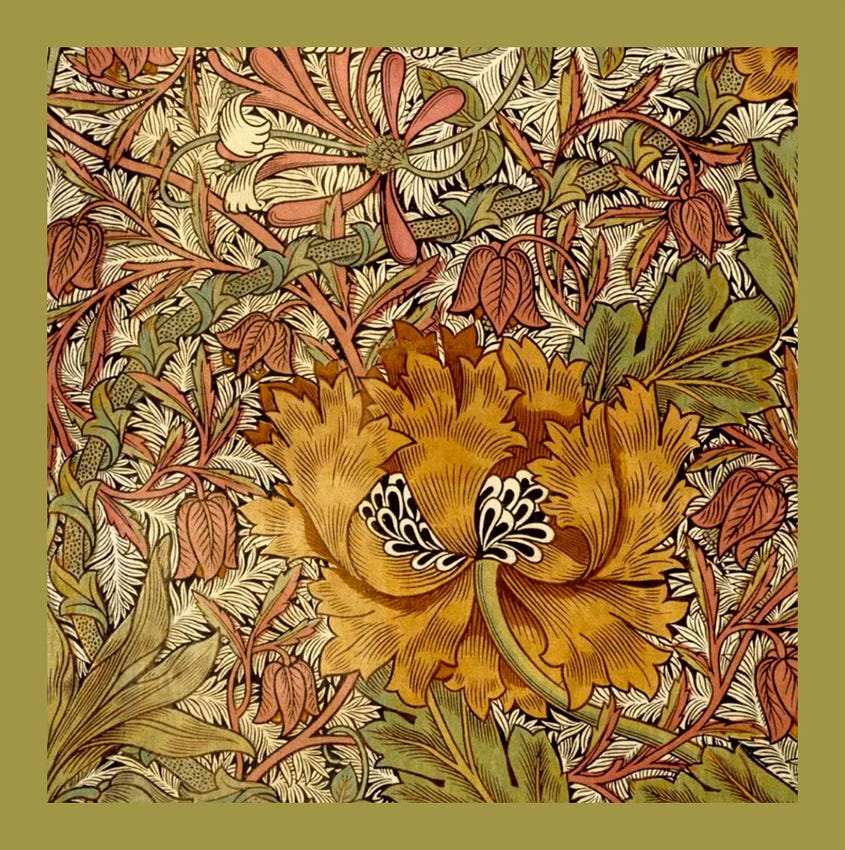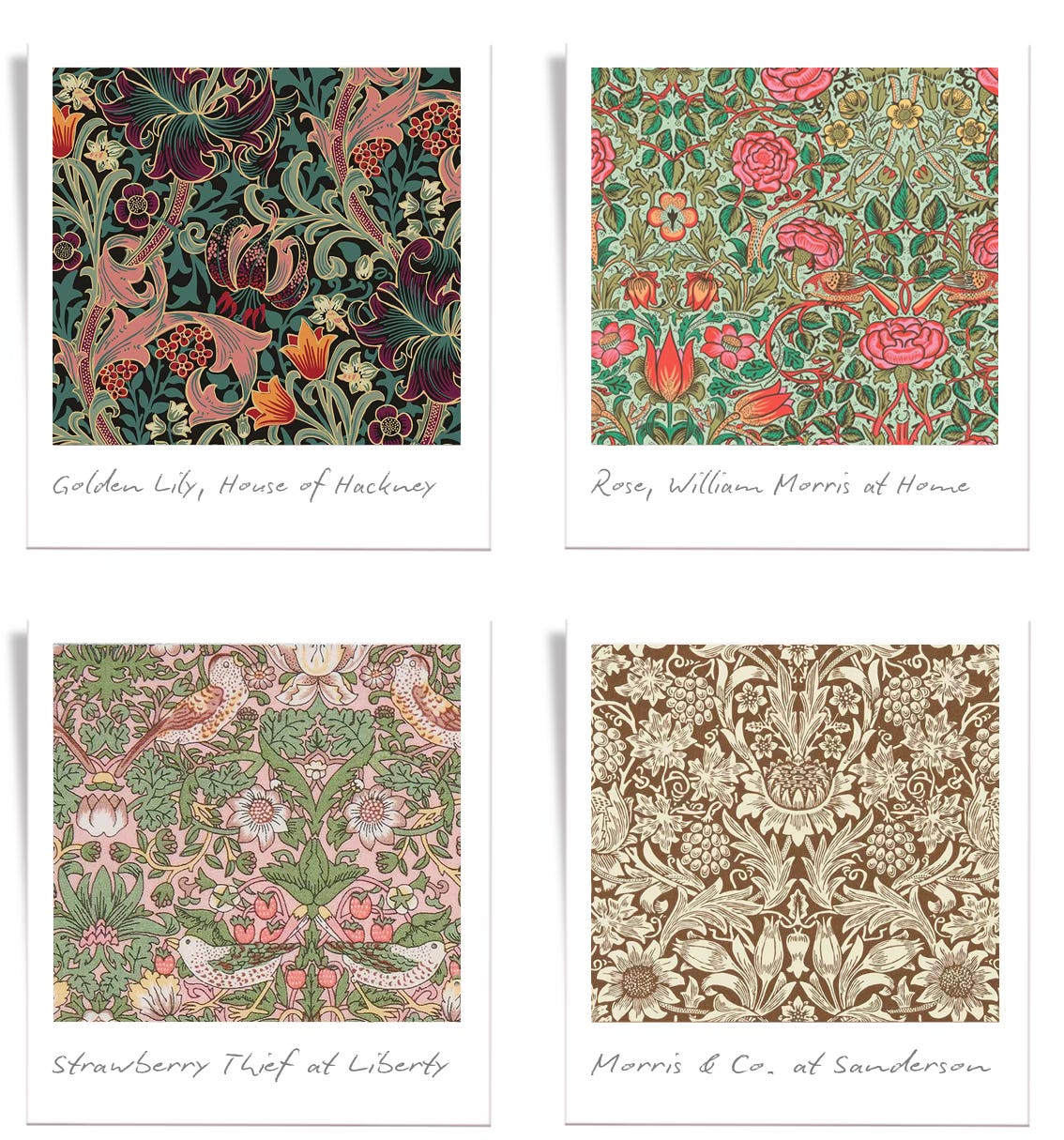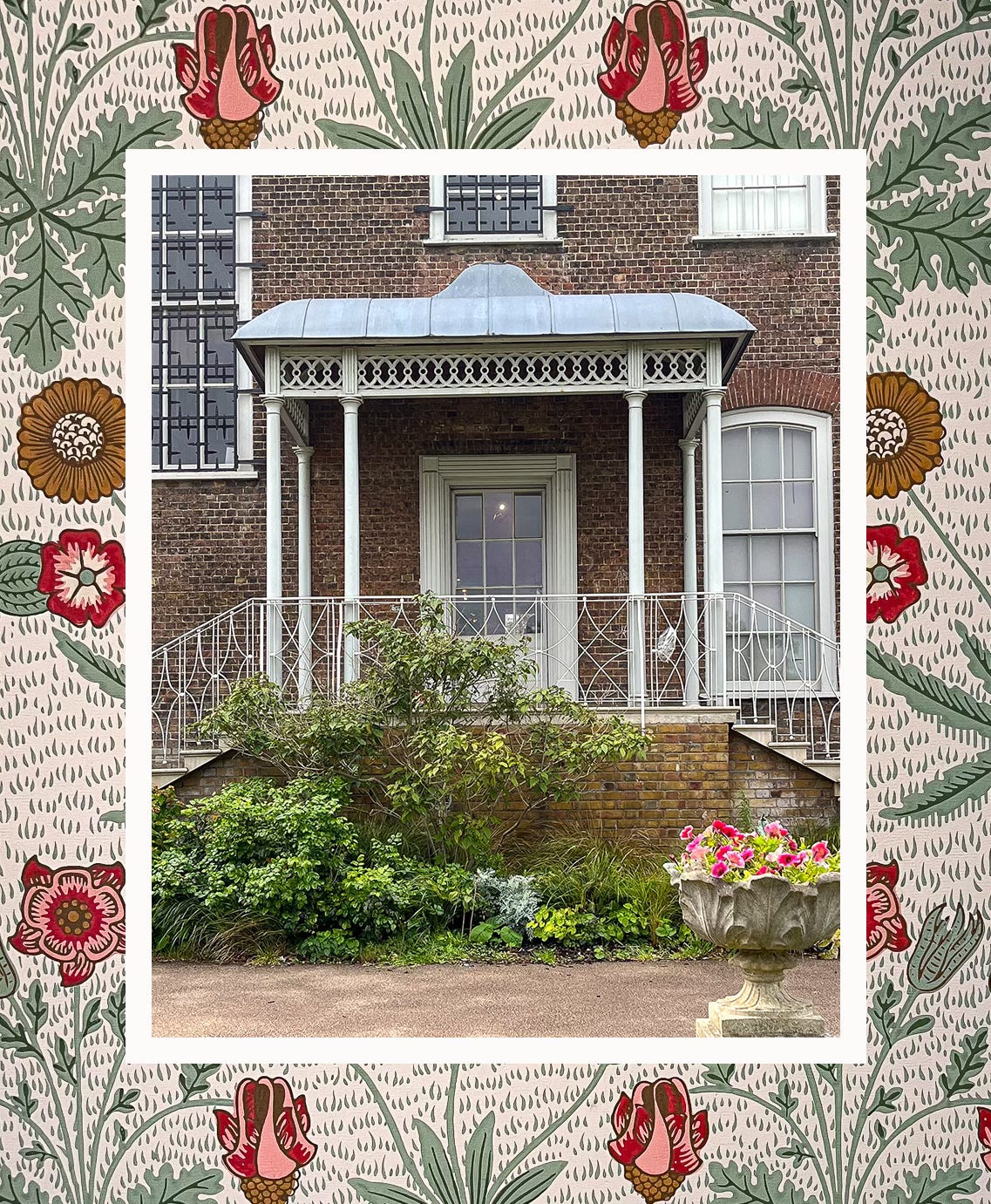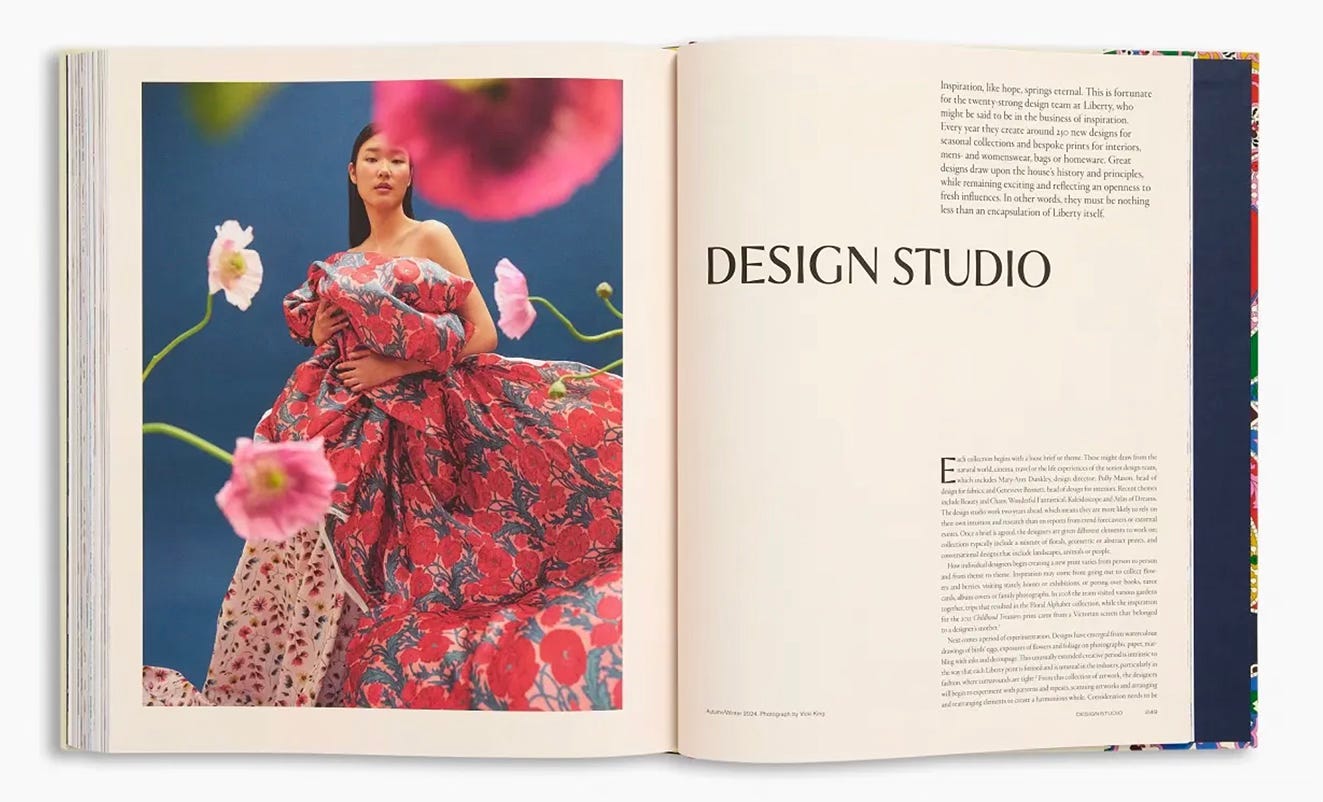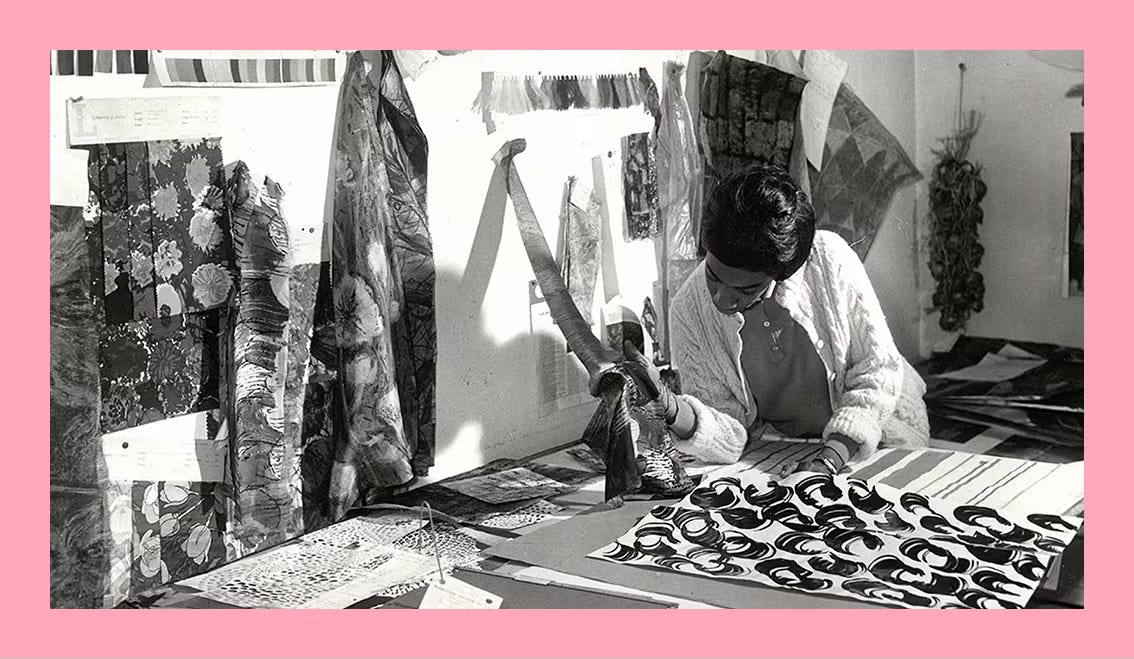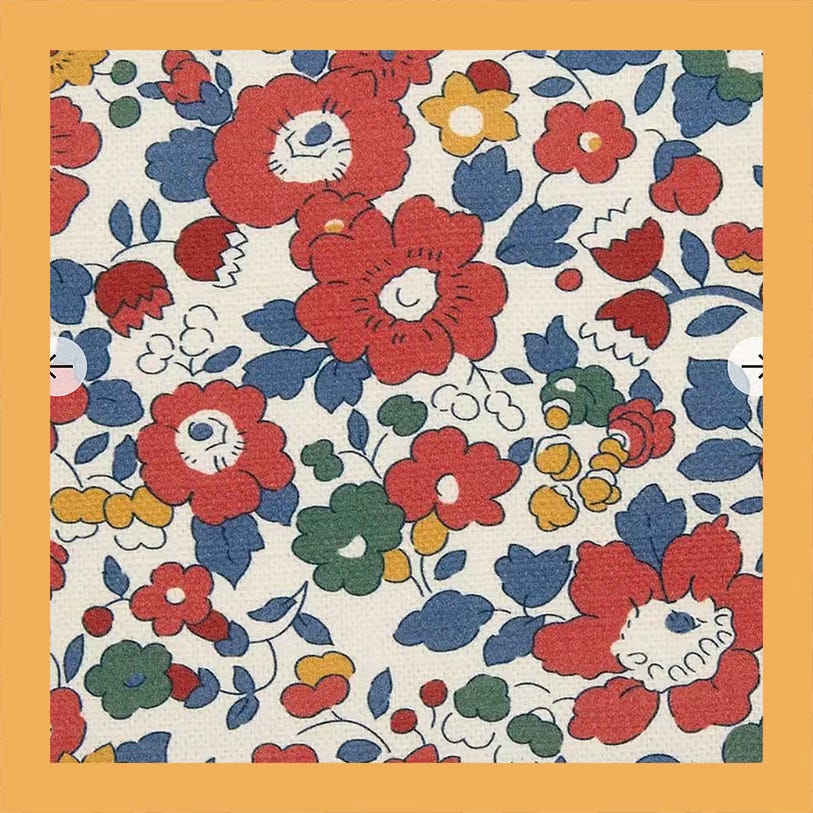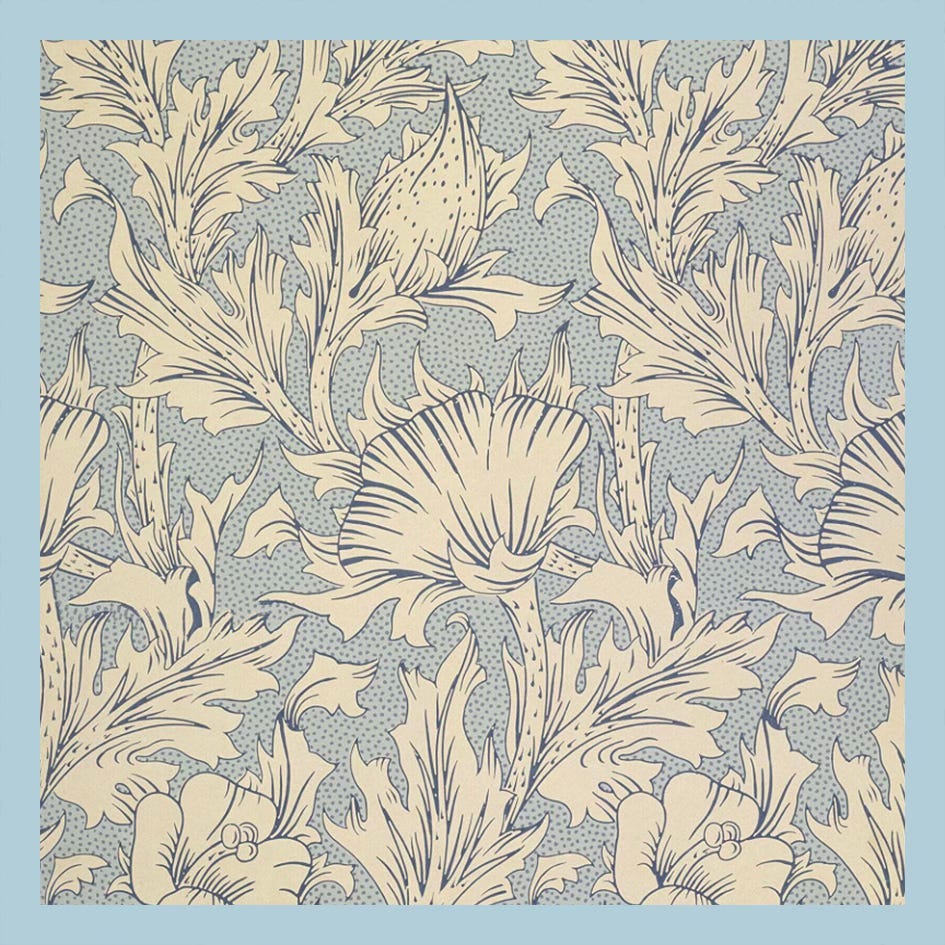Morris Mania: How Britain’s greatest designer went viral
William Morris and the Arts & Crafts movement, an exclusive interview with Kassia St Clair about her new book: Liberty: Design Pattern Colour and a glimpse into the creative life of May Morris.
Welcome to Love Vintage Etc.
With a background in illustration and a master’s degree in graphics, my work and interests are deeply rooted in art and design. And I can’t remember a time when a William Morris pattern didn’t line a hotel lobby or cover a school pencil case. The 80s and 90s were awash with Arts & Crafts style and whilst the fabrics and wallpapers dipped in and out of fashion it was the Ikea tv campaign, in 1996, encouraging us to ‘chuck out the chintz’, that put a temporary halt on acanthus leaves and wild poppies.
But whilst we were busy listing the Strawberry Thief curtains in Loot, and painting our loft apartments floor-to-ceiling grey, the appeal and interest in organic colour palettes and craftsmanship gradually slipped back into our consciousness.
The 2000s saw a renewed curiosity for the Arts & Crafts and Morris’s philosophy - centred on a return to quality and craft rather than mass production, resonated with concerns about sustainable design.
Once again, the desire for handmade, authentic products became a thing and reclaimed and vintage furniture was suddenly cool again. Interior magazines ditched minimal in favour of decoration, colour, craft, botanical prints and heritage style and a new generation of designers took note.
The Arts & Crafts movement, and its extensive archive, continues to inspire contemporary design studios such as House of Hackney’s William Morris Collection, above, where fabrics and wallpapers are re-imagined with new combinations and colourways. Also above: Morris & Co. at Sanderson, William Morris at Home and Liberty Print Studio with their interpretations of Morris’s original artworks.
Morris Mania Exhibition
A new display at the William Morris Gallery and museum explores the lasting legacy of Morris’s work and the popularity of his designs worldwide. With items from the museum and loans from private and public collections the display demonstrates the global reach of Morris’s art with everything from Wellington boots, to radios, suits, saris, teapots and even a willow patterned bicycle.
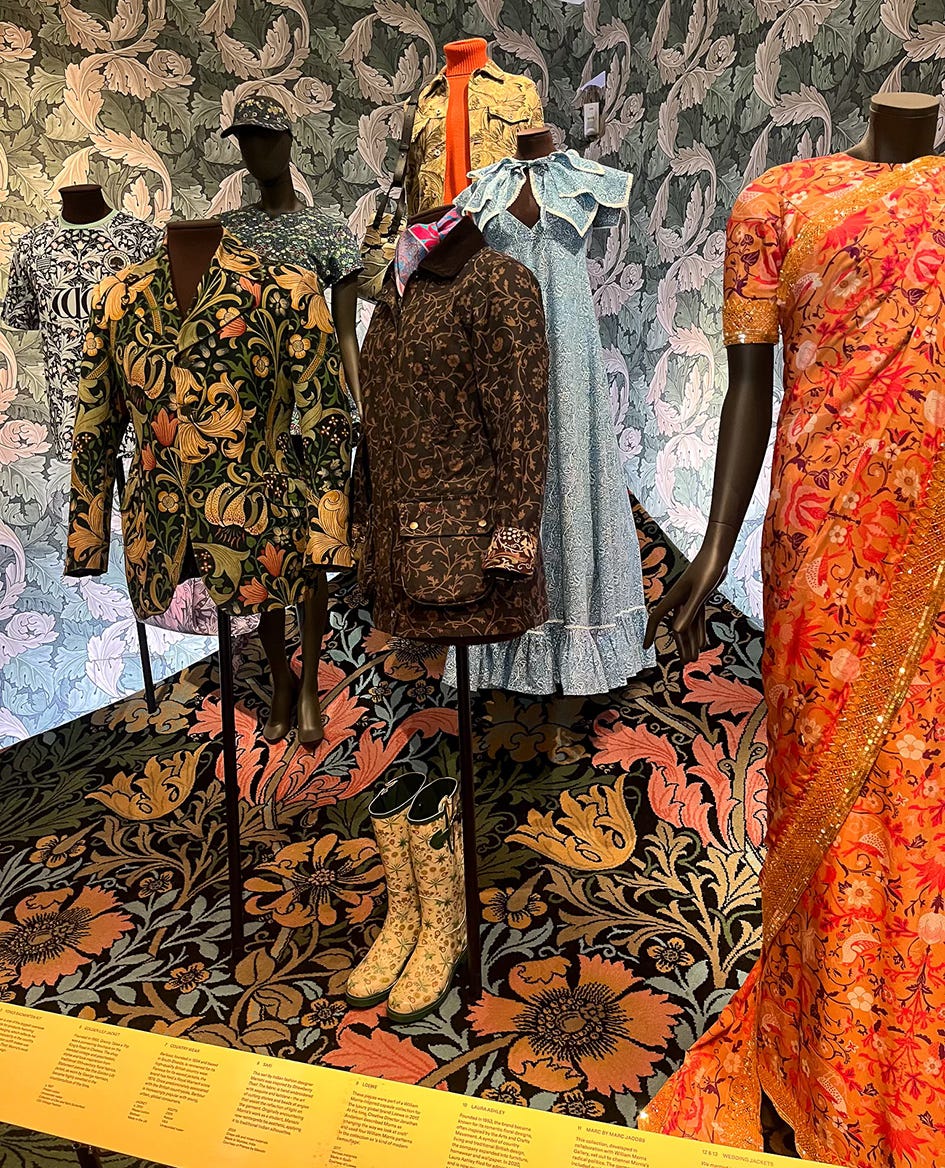
The gallery, a grade II listed building, is housed in what was once the Morris family home and holds the world’s largest collection of Morris & Co. including stained glass, ceramics, embroidery patterns, textiles, paintings and wallpaper. A theme flows through each room such as furniture or wallpaper manufacture and upstairs is a space dedicated to the Kelmscott Press illustrated books and archive.
Morris Mania is free to enter and runs until 21 September. The museum, café & shop is open Tuesday to Sunday 10am - 5pm.
William Morris Gallery Lloyd Park, Forest Rd, Walthamstow, London E17 4PP
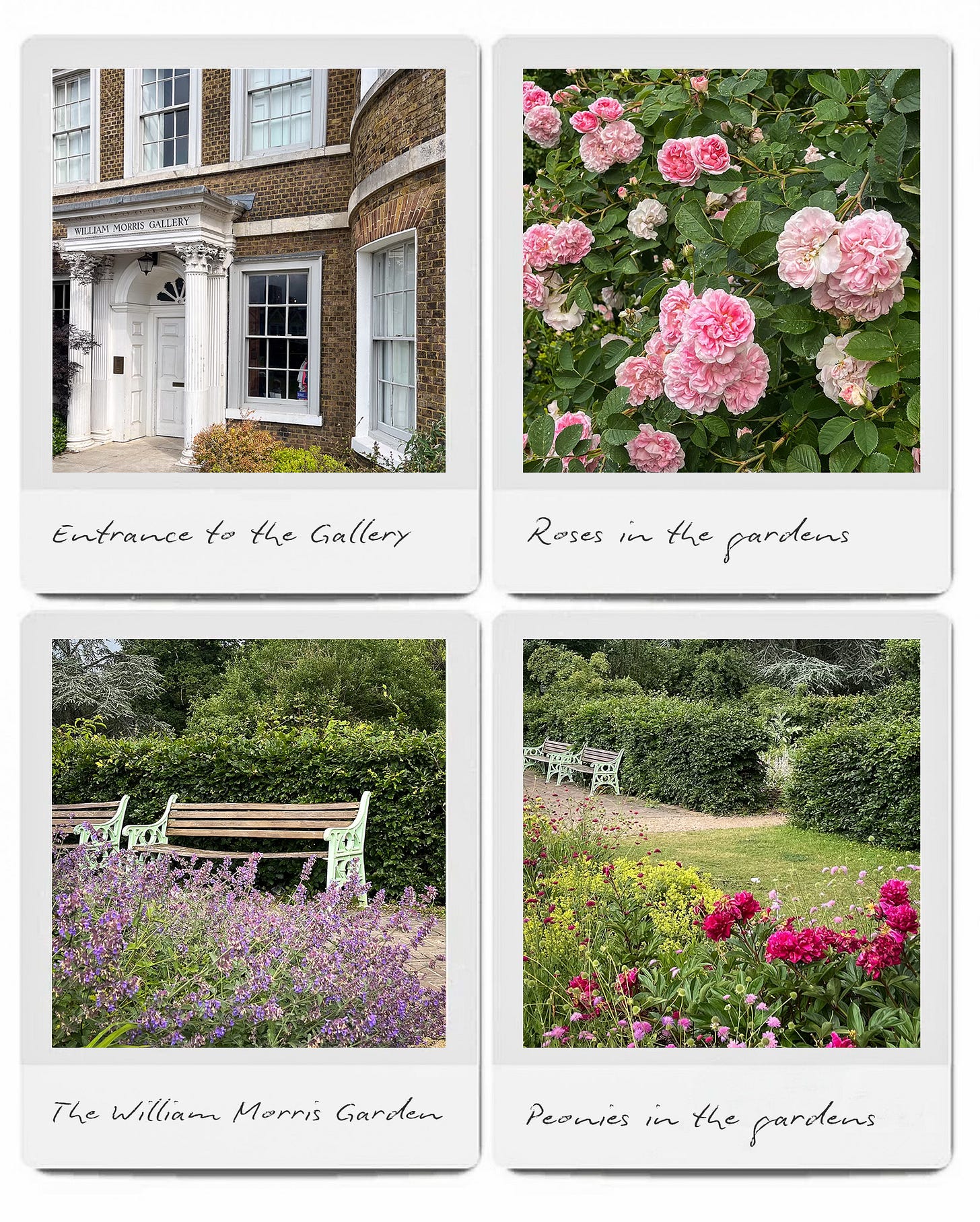
Author Interview: Kassia St Clair
Kassia is probably best known for her book The Secret Lives of Colour (I highly recommend it) which was a Sunday Times top-ten bestseller, BBC Radio 4′s Book of the Week and has been translated into over 20 languages. In her new book, Liberty: Design. Pattern. Colour she celebrates the extensive range of Liberty fabrics designed over the last century and a half.
I am delighted to have met up with Kassia to talk about the book in this exclusive interview.
MM: Kassia, can you please tell us a little bit about your research for the book.
KSC: As projects go, this was a bit of a dream, because Liberty has an extensive archive that includes over 60,000 different pieces. Some of this is in the store itself, part of it is stored in an off-site bunker and then there's also a section more related to the business which is part of the Westminster City Archive. The entire textile archive has been digitised so that the designers can refer to and search it. I didn't have as much time as I'd like (I never have as much time as I'd like), but research meant looking through the archive, reading other books about Liberty's history, finding newspaper and magazine articles about Liberty's prints from the past 150 years and interviewing some current members of the design team. I also had to research some of the key art movements in which Liberty have been involved (Art & Crafts and Aestheticism, for example), as well as looking into some of the key figures involved in these movements and those who have designed for Liberty.

MM: Whilst writing the book what was the most fascinating fact or inspiring detail that you came across?
KSC: I loved learning about Bernard Nevill, who worked for Liberty's through the mid-to-late 1960s and into the 1970s. He created some incredible designs, attracting buyers like Yves Saint Laurent and Mary Quant, but he was also pretty eccentric. His home was the set for the uncle's home in Withnail and I and he was a synesthete, experiencing colour more intensely than usual.
MM: What are your favourite fabric designs from the Liberty archives and why are you drawn to those designers and styles?
KSC: I love Betsy because it's such an iconic print and so adaptable - designers can play around with it, making it tropical, or monochrome, or as subversive as they feel. I think that shows real strength in a classic print. I also love Althea McNish's Hula Hula: it makes me happy.
MM: Have you always been interested in design history or is it a subject you’ve been attracted to through other projects?
KSC: I’ve been interested in design history since I was at university studying history: these were the kinds of topics I was drawn to. Afterwards it was an interest I pursued when I worked at the World of Interiors, House & Garden and 1843 magazine and then it's been a mainstay of what I write about since I started writing full-time in 2016.
MM: I’m always fascinated by the working environments of artists and writers and would love to hear about your workspace. Do you write from home or a dedicated studio and what is currently on your desk?
KSC: I work in a pine-green shed at the bottom of my garden. My desk is medium messy I'd say. It's pretty big, and there are books on there, a few magazines, some papers I need to file, pads of paper, pens... I'm just starting work on a new project and the early stages involve lots of note-taking and book reading. I also have a water bottle on my desk, a Tala knuckle lamp, a speaker and a couple of photos. My desk used to face the window but now it's side-on, with a pinboard in front of me and Vitsoe shelves over most of the remaining walls, which are painted butter yellow.
All Kassia St Clair’s books can be found here and more information here @kassiastclair
May Morris: embroiderer, jewellery designer & maker
May Morris was the younger daughter of William Morris and Jane Burden (Pre-Raphaelite model and muse of painters Rossetti and Burne-Jones). May studied embroidery at the National Art Training School, now Royal College of Art, and joined the family firm Morris & Co. co-founded by her father.
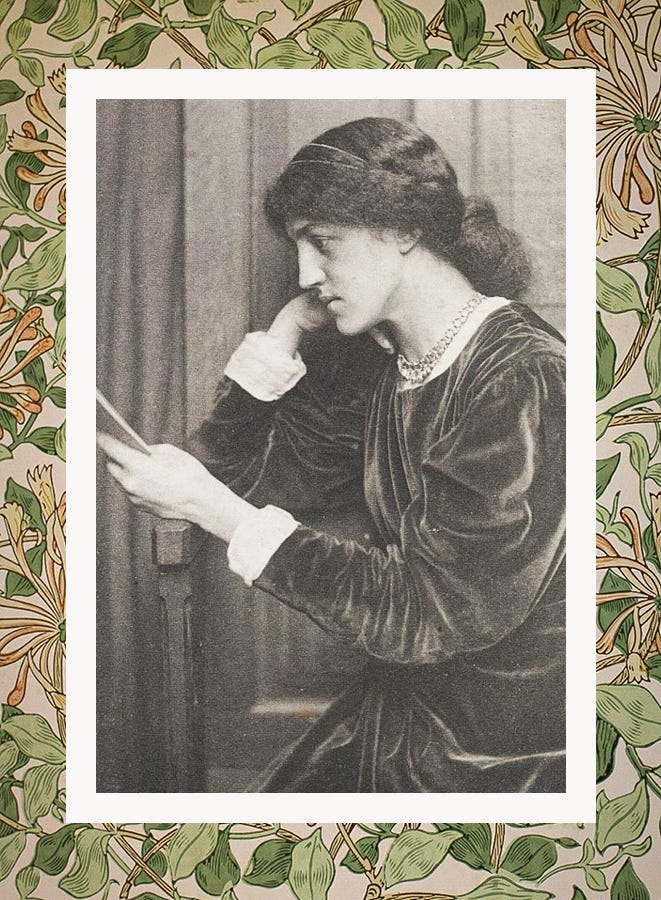
In 1885, at the age of 23, May was promoted to designer and production manager for the embroidery department at the company headquarters in Queen Square, Bloomsbury. The Morris family lived at the same address, above the showrooms and workshops.
In her new role May was responsible for creating surface patterns for wallpapers and fabrics, in addition to supervising a team of freelance designers and in-house embroiderers, though many of her own designs were overshadowed and went uncredited.
The Honeysuckle design, a classic example of Arts & Crafts style, was initially attributed to William Morris. Archival research has since confirmed that the original - with its flowing illustrative style, ethereal florets and softer colour palette was designed by May, in 1883 and produced as a wallpaper.
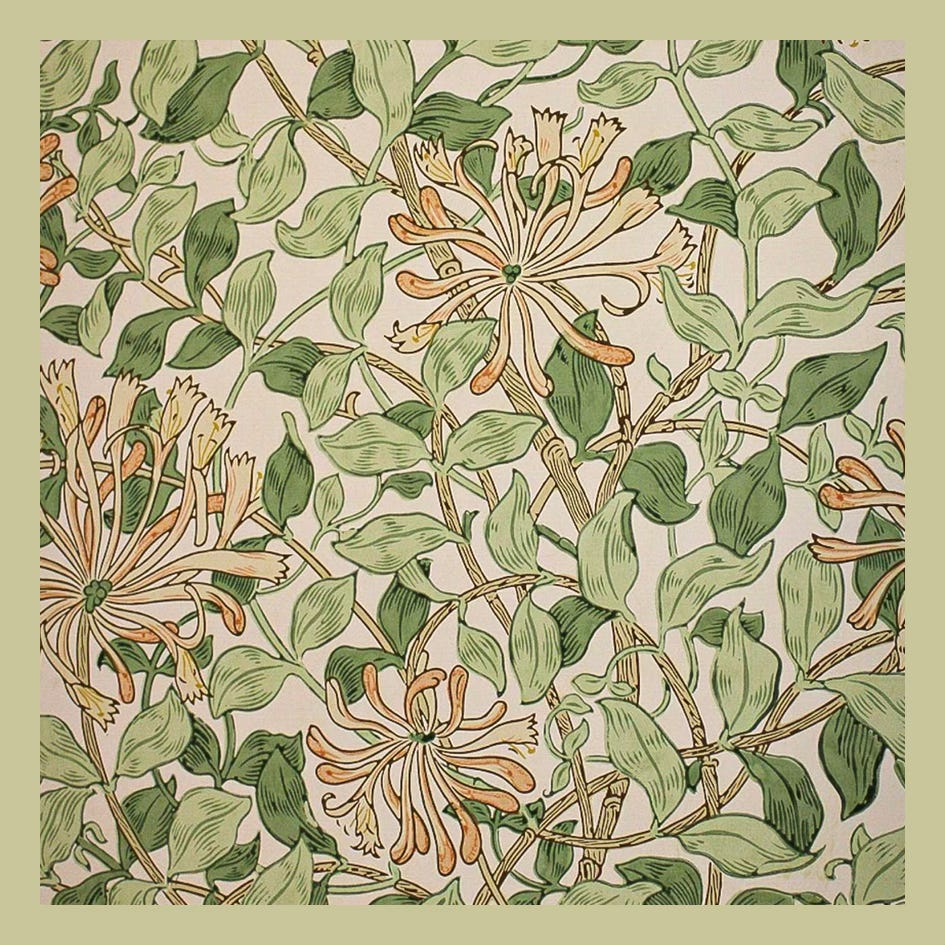
After her father’s death, in 1896, May moved into an advisory role at Morris & Co. but despite her contribution and position within the Arts & Crafts movement she never received the recognition she deserved, within her lifetime.
More recently a capsule collection of fabrics has been re-imagined by the Liberty Fabrics’ studio, incorporating May’s original artwork. In collaboration with the William Morris Gallery this contemporary interpretation features motifs created by May Morris such as tulips, irises, spring blossom and orchard fruits.
Thank you for reading Love Vintage Etc. I value every one of you being here and want you to feel excited about what you discover. I share a lot for free and these posts take a great deal of time and research and include my own photography. If you subscribe for free then why not consider upgrading for just £25 for a year (summer offer until 25 June). I would LOVE you to join my community where you’ll get to go behind the paywall, access archive posts and receive a welcome gift. Thank you so much for your support, Michelle x

If you have enjoyed this post please give it a like on the little heart symbol - it helps others find it by spreading the word. Thank you. Until next time, Michelle x





